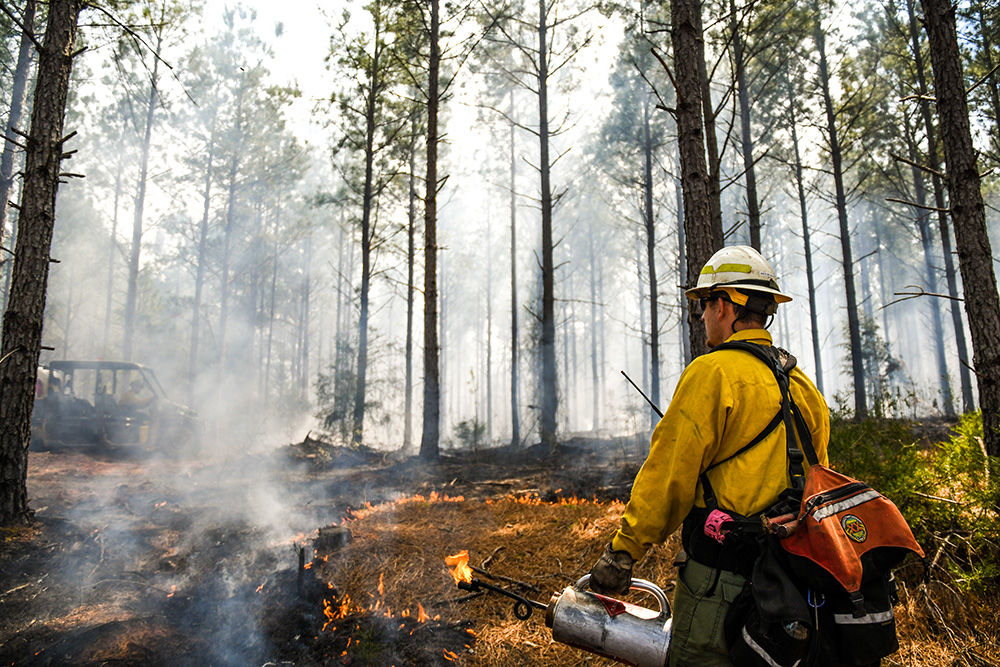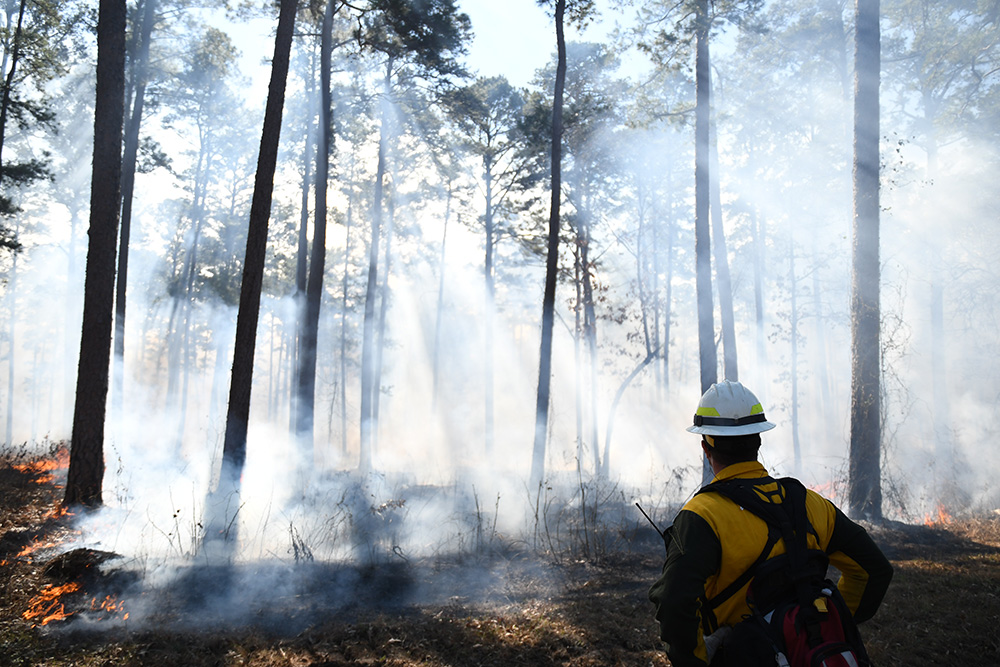Wildland fire is a broad term that encompasses both wildfire and prescribed fire. Historically, wildland fires burned frequently throughout Texas and were a natural part of the ecosystem. These historic fire regimes were often characterized by high frequency-low intensity fires that were important in establishing and maintaining native plant and animal communities that were adapted to fire. Gradually, natural areas were displaced with agriculture, urban expansion and more effective fire suppression. With the introduction of fast growing, non-native plant species, these once fire adapted ecosystems became overstocked with highly flammable vegetation.
Armed with a better understanding of the importance of fire in Texas’ native ecosystems, land managers began to reintroduce fire back into the landscape with carefully planned prescribed fires. Today, prescribed fire is commonly used as a tool help manage vegetation growth in natural areas and restore native plant and animal communities.
Prescribed fires near wildland urban interface areas can help keep wildlands open and aesthetically pleasing, while also reducing the overall vegetative fuel available – which reduces the surrounding community’s vulnerability to catastrophic wildfire.
Benefits of Prescribed Fire
Prescribed fire can have many benefits, including:
- Reduction of hazardous vegetative fuels
- Recycling nutrients back into the soil
- Promoting growth of healthy, native trees, wildflowers and other plants
- Improving wildland aesthetics
- Minimizing the spread of insects and diseases
- Increasing production and quality of forage and browse for wildlife and livestock
- Supporting native plant species
- Many plants germinate after fire.
- Lush, new growth after a fire provides cover for small mammals and birds
- Reduction of dead leaves and downed brush on the forest floor
- Helping maintain natural communities, such as prairies and savannahs

Prescribed Fire Planning
Prescribed fires must be carefully planned and executed to ensure the safety of fire crews, neighboring communities and the landscape. The prescribed fire planning process begins with the creation of a Prescribed Burn Plan. These plans establish management objectives and include safety, contingency and communications plans, weather conditions and resources required for the burn, site description and information, and a Go/No-Go checklist.
Prior to the burn, fire breaks are constructed around the burn unit where necessary. Fire breaks are non-burnable strips surrounding a burn unit that are intended to contain a surface fire within the burn unit. Fire breaks may include existing natural and manmade features, such as rivers and roads, or constructed by removing all flammable vegetation in a continuous strip down to bare mineral soil.
On the day of the burn, fire breaks are inspected and the Go/No-Go checklist is utilized to ensure all variables (weather, available resources, safety/communications plans, etc.) are within the prescription of the burn plan before any ignitions take place. Once ignited, the perimeter of the burn unit is continuously patrolled to ensure no fires escape onto adjacent properties.

For more information on prescribed fire, visit Texas A&M Forest Service’ website at https://tfsweb.tamu.edu/PrescribedBurns/.